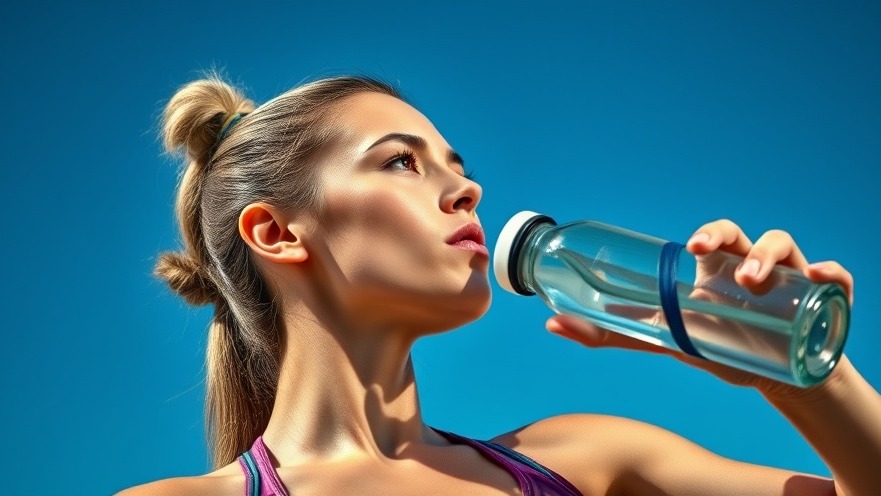
The Importance of Hydration During Workouts
As temperatures rise and outdoor workouts become more common, understanding how to properly hydrate cannot be overlooked. Serious athletes and casual exercisers alike are often unaware of the nuances involved in maintaining hydration levels during those hot summer days. Dehydration, even in mild forms, can lead to significant dips in energy and overall performance—an undesirable outcome for anyone serious about their fitness.
How Heat Impacts Your Body
Understanding the physiological effects of high temperatures on your body can enhance your performance and ensure a safe workout. When you exercise in hot conditions, your body loses water through sweat more rapidly. This process is designed to cool your body down but also results in a significant decrease in electrolyte levels, particularly sodium and potassium, which are crucial for muscle function and energy.
Replenishment is Key: Electrolytes vs. Water
Simply drinking water may not suffice for optimal hydration during intense outdoor sessions. It is vital to understand the difference between hydration and rehydration. While water quells thirst, it’s the electrolytes that restore balance in your body's fluids. Sports drinks can be beneficial in this aspect, but they are often laden with sugars. It's important to strike a balance—consider making your own electrolyte drink to avoid unnecessary additives while still achieving proper hydration.
Signs You May Be Dehydrated
How do you know if you’re adequately hydrated? Being aware of the signs can enhance not only your workout but your overall well-being. Common symptoms of dehydration include fatigue, dizziness, and increased heart rate. For those committed to a healthy lifestyle, it's essential to listen to your body. If you experience any of these symptoms during or after exercise, it may indicate that your hydration practices need revisiting.
Practical Hydration Tips for Outdoor Workouts
1. Pre-hydrate: Start your workouts well-hydrated. Drink water at least 16-20 ounces two hours before exercising.
2. Plan for breaks: Ensure to schedule short hydration breaks during your workout, especially if it’s over 30 minutes. Carry a portable water bottle with you.
3. Post-workout recovery: Don’t overlook hydration after your workout. Replenishing lost fluids and electrolytes is crucial to recovery, so drink water combined with a balanced meal.
Consequences of Neglecting Hydration
Neglecting hydration can extend beyond immediate physical symptoms. Consistent dehydration can lead to long-term health issues such as kidney stones, urinary tract infections, and muscle cramps. For those families living with traditional values and seeking health through conscious living, integrating hydration practices into your day can contribute to a holistic well-being strategy, reinforcing strong family values that prioritize health.
The Connection Between Faith and Wellness
Many families find that intertwining faith and health forms a strong foundation for living purposefully. As faith-based lifestyles often center around personal responsibility and wellness, establishing a routine that includes proper hydration connects the dots between maintaining physical health and honoring family values. Encourage family members, from children to adults, to adopt mindful habits that celebrate both physical and spiritual well-being.
Building a Happy and Healthy Family
Sharing knowledge about hydration and well-being can enhance family connections. Consider introducing fun hydration challenges that involve the whole family, which can not only educate about healthy habits but also strengthen bonds through teamwork and shared goals. With a focus on maintaining stability and emotional wellness at home, prioritize discussions around health and fitness in family gatherings, encouraging mindful living.
As summer heats up, remember that hydration is not just a solo endeavor; it’s a family commitment. Embrace these hydration practices for a healthier, happier life with those you love.
Ultimately, investing time in these simple routines fortifies connections and fosters a culture of wellness within the home, reflecting values that emphasize well-being, balance, and community-minded living.
If you’re ready to take charge of your hydration practices this summer, start by reaching for a water bottle and consult your family on how to incorporate creative hydration techniques into your outdoor workouts!
 Add Element
Add Element  Add Row
Add Row 



Write A Comment